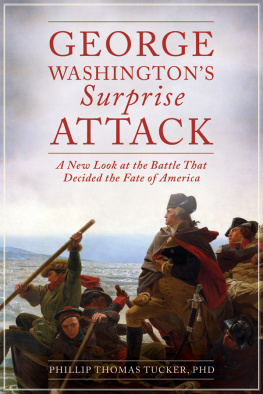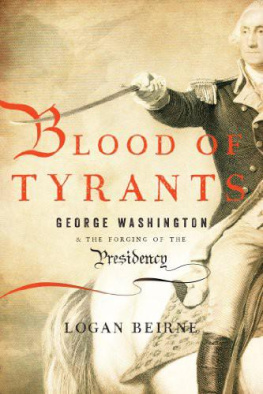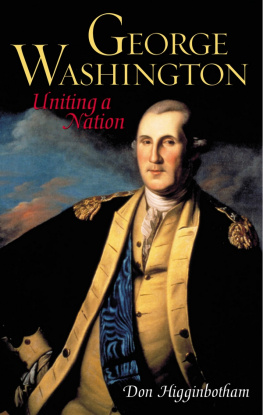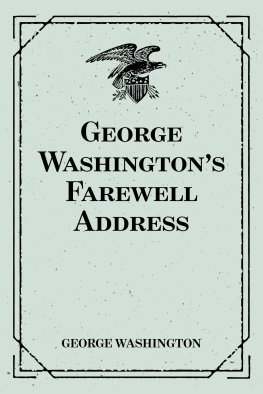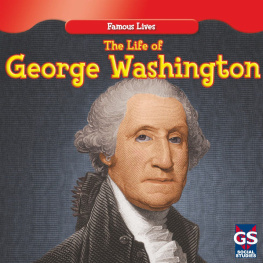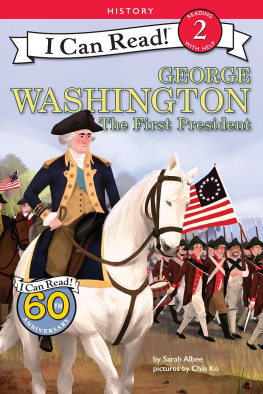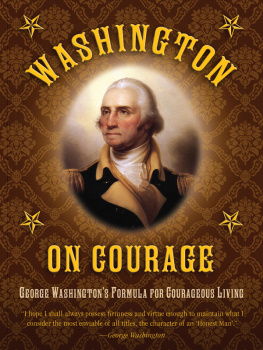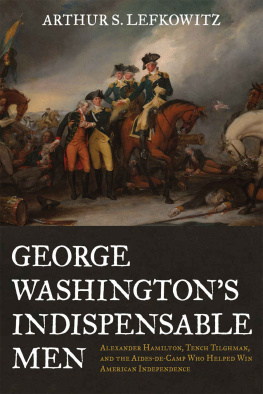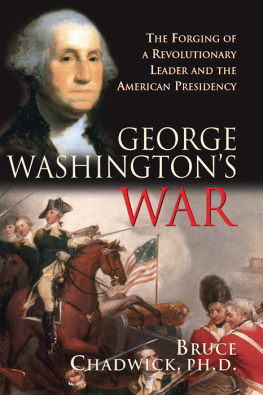
GEORGE WASHINGTON
History in an Hour
David B. McCoy

History in an Hour is a series of ebooks to help the reader learn the basic facts of a given subject area. Everything you need to know is presented in a straightforward narrative and in chronological order. No embedded links to divert your attention, nor a daunting book of 600 pages with a 35-page introduction. Just straight in, to the point, sixty minutes, done. Then, having absorbed the basics, you may feel inspired to explore further.
Give yourself sixty minutes and see what you can learn
To find out more visit http://historyinanhour.com or follow us on Twitter: http://twitter.com/historyinanhour
Contents
George Washington has become such an institutional figure, at least in the United States, that the source of his prominence is easily lost. Cities, streets, bridges, schools, parks, and an entire State have all been named in his honour. His image is on the US currency, coins and postage stamps. Many manufacturers, keen for association with his reputation of virtue, strength and honesty, put his image on their products to boost sales. As recently as 2010, Washington was shown leading a charge in a Dodge Challenger TV commercial. Turning him into a symbol, however, risks losing him as a man.
Born into a middle-class family, Washington became one of the richest men in the colonies. By the age of twenty-two, his name was well known on both sides of the Atlantic. He was unanimously elected as commander-in-chief of an army that would go on to win independence. Behind the scenes, he orchestrated a coup dtat which resulted in the creation and implementation of the Constitution, still used in the United States today. Subsequently, he went on to be unanimously elected as its first president. In voluntarily resigning his office, Washington singlehandedly redefined the idea of greatness itself. Formerly, great leaders earned esteem by conquering an enemy and subduing its people; during the Age of Divine Right, greatness was a reflection of the rulers ability to put down threats to the throne. Washington defied these definitions when he walked away from power twice, at the end of the Revolution and after the presidency (which he could have held for life).
When compared with fellow American leaders, Washington was not a particularly original thinker, but his ego-less leadership proved a vital and assured presence. So who was the man George Washington, what did he achieve, and why is he still considered one of the most influential people in history?
This, in an hour, is the story of George Washington.
George Washington was born on 22 February 1732 in Westmoreland County, Virginia, son of Augustine Washington, a leading planter in the area. Augustines first wife died in 1729, leaving him two sons, Lawrence and Augustine Jr, and a daughter, Jane. Augustine Sr soon married Mary Ball with whom he had six children, the first of which was George. Mary was wealthy in her own right, and reputedly a self-centred and formidable woman. In addition to inheriting her strong health and disposition to endure hardship, George also seemed to have inherited her temper, which he struggled his whole life to control.
By 1738, the family had moved to a plantation near Fredericksburg, Virginia where George spent much of his youth. This period remains the least documented and understood part of his life. Many of the widely accepted fables of Georges youth concern his physical strength and honesty as told by his early (and unreliable) biographer, Mason Locke Parson Weems.
The education of a son of a wealthy planter normally included (as it did with Georges older half-brothers) English grammar and arithmetic. Adolescent years would have included instruction in geometry, geography, book keeping and surveying, and would have culminated in a year or two studying abroad in England. Unfortunately, when he reached the age of eleven, his father died and Georges formal education ended. From what little we do know of his education, Washington excelled in mathematics and surveying. As George grew into a young man, he found it increasingly difficult to tolerate his domineering mother, and spent most of his time away from home studying surveying or spending time with his step-brothers, especially Lawrence.
Becoming the ward of his eldest half-brother, George relished spending time at Lawrences Mount Vernon estate. Lawrence eagerly assumed the role of mentor, aiding and encouraging Georges studies. More importantly, Lawrence introduced his young charge to the sophisticated world of the Virginia gentry. It was during this time that George captured the interest of the powerful Fairfax family into which Lawrence had married.
With most of his late fathers estate being inherited by his older half-brother, George decided to pursue surveying as his profession. It was a respectable occupation for someone of his social rank, approximately the same status as a doctor or lawyer.
In 1748, George joined a surveying expedition into western Virginia at the invitation of Lord Fairfax, a land-baron and his brothers father-in-law. Impressed with his skills and work ethic, the Fairfax family secured George an appointment as a county surveyor. By the age of seventeen, he was operating his own surveying business. In the following years, he crossed and re-crossed the Appalachian Mountains, mapping the far reaches of the American wilderness for weeks at a time. He began buying up favourable lands, gradually taking his first steps toward becoming one of Virginias wealthiest men. George Washingtons first profession, then, entailed the measuring, understanding and, incrementally, the realising of the American landscape.

Washington the surveyor
The years 17521753 marked a turning point in his life. Lawrence contracted an aggressive strain of tuberculosis. Hoping that the tropical climate would help his condition, he travelled to Barbados, accompanied by George. While there, George contracted a case of smallpox, which may have left him sterile. Lawrences health did not improve: he returned to Mount Vernon and died in 1752. George was made executor and, at the age of twenty, residuary heir of one of the best estates in Virginia. With this turn of fate, he no longer needed to survey professionally, and turned his attention instead to the running of his various farms and execution of his new duties as an adjutant general in the Virginia Militia.

Washington as the Virginia Colonel
Prior to entering the military, his brother Lawrence held Virginias single position of adjutant. After Lawrences death, four military districts were created, each needing an adjutant that would be responsible for recruiting and training troops. Seeing a chance to enhance his status in the colony, in 1753 Washington rode to Williamsburg, Virginias capital, and petitioned Governor Dinwiddie for an appointment. George had no military training, except for having read two books on the art of warfare, but stood nearly six feet three inches tall enormous by eighteenth-century averages, and weighed about 220 pounds. Impressed with the young mans presence and spirit, Dinwiddie appointed him adjutant to one of the four military districts.
Next page

